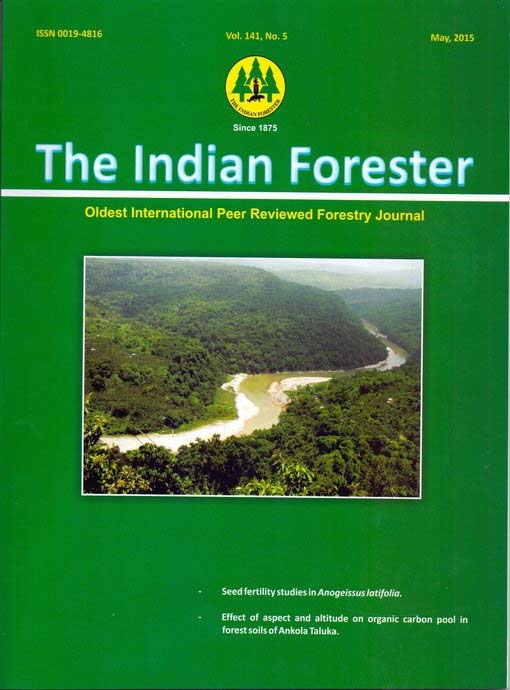Seed Fertility Studies in Anogeissus Latifolia
DOI:
https://doi.org/10.36808/if/2015/v141i5/70223Keywords:
Anogeissus Latifolia, Infertility, Seed Maturity, Seed Germination, Seed Storage.Abstract
The seeds of Anogeissus latifolia mature in second fortnight of March each year when the seed moisture content is around 12 per cent and colour of fruits turns to blackish green. Seeds are about 95% empty when collected from the trees. The germination percentage of seeds is only 1-2 per cent; however 50% seeds are sound and viable. Seeds can easily be stored at 150 C in refrigerator in polythene bags at a moisture content of 9 per cent with slight decrease in viability up to two years. In addition to infertility/emptiness of seeds insect problem was also studied using entomological inputs. To control insect attack on fruits/seeds of A. latifolia, systemic insecticides were applied in the trees in the field and after six months of insecticide application seeds were collected from treated and untreated trees and tested in laboratory. The results showed that the number of half filled seeds was increased (about 10%) over the seeds of untreated trees; however, there was no significant increase in number of filled seeds. Increase in half filled seeds of treated trees shows the effect of systemic insecticides on the suspected insect attack in the seeds of the species. These observations showed that infertility problem in the seeds of A. latifolia are related with the insect infestation and needs further detail studies.References
Allen G.S. (1958a). Factors affecting the viability and germination behaviour of coniferous seed. Part-I. Cone and seed maturity Tsuga heterophylla (Rafn.). For. Chron., 34: 266-274.
Allen G.S. (1958b). Factors affecting the viability and germination behaviour of coniferous seed. Part-II. Cone seed maturity. - Pseudotsuga menziesii (Mirb.). Franco. For. Chron., 34: 275-282.
Ching T.M. (1960). Seed production from individual cone of grand fir (Abies grandis Lindl.). Journal of Forestry, 58: 959-961.
DANIDA (2000). Guide to Handling of Tropical and Subtropical Forest Seed. DK-3050, Humlebaek, Denmark.
Fowells H.A. (1949). An index of ripeness for sugar pine seed. USDA. For. Serv. Forest and Range Exp. Sta. Res. Note, 64:1-5.
ISTA (1993) (International Seed Testing Association). International rules for seed testing. Seed Science and Technology, 21:1- 288.
Negi A.K. and Todaria N.P. (1993). Improvement of germination of some Himalayan tree seeds by temperature treatment. Seed Science and Technology, 21: 675-678.
Prasad J. (1943). Seedling of Anogeissus latifolia. Indian Forester, 69 (5): 193-196.
Rao G.M., Rao A.R., Acharyulu M.V.S.N., and Prasad N.S., (1998). Improvement of Planting Stock through culling in Root Trainer Nursery. Indian Forester, 124 (9): 739-742.
Troup R.S. (1921). The Silviculture of Indian Trees. Vol. III., Clarendon Press, Oxford.
Downloads
Downloads
Published
How to Cite
Issue
Section
License
Unless otherwise stated, copyright or similar rights in all materials presented on the site, including graphical images, are owned by Indian Forester.





